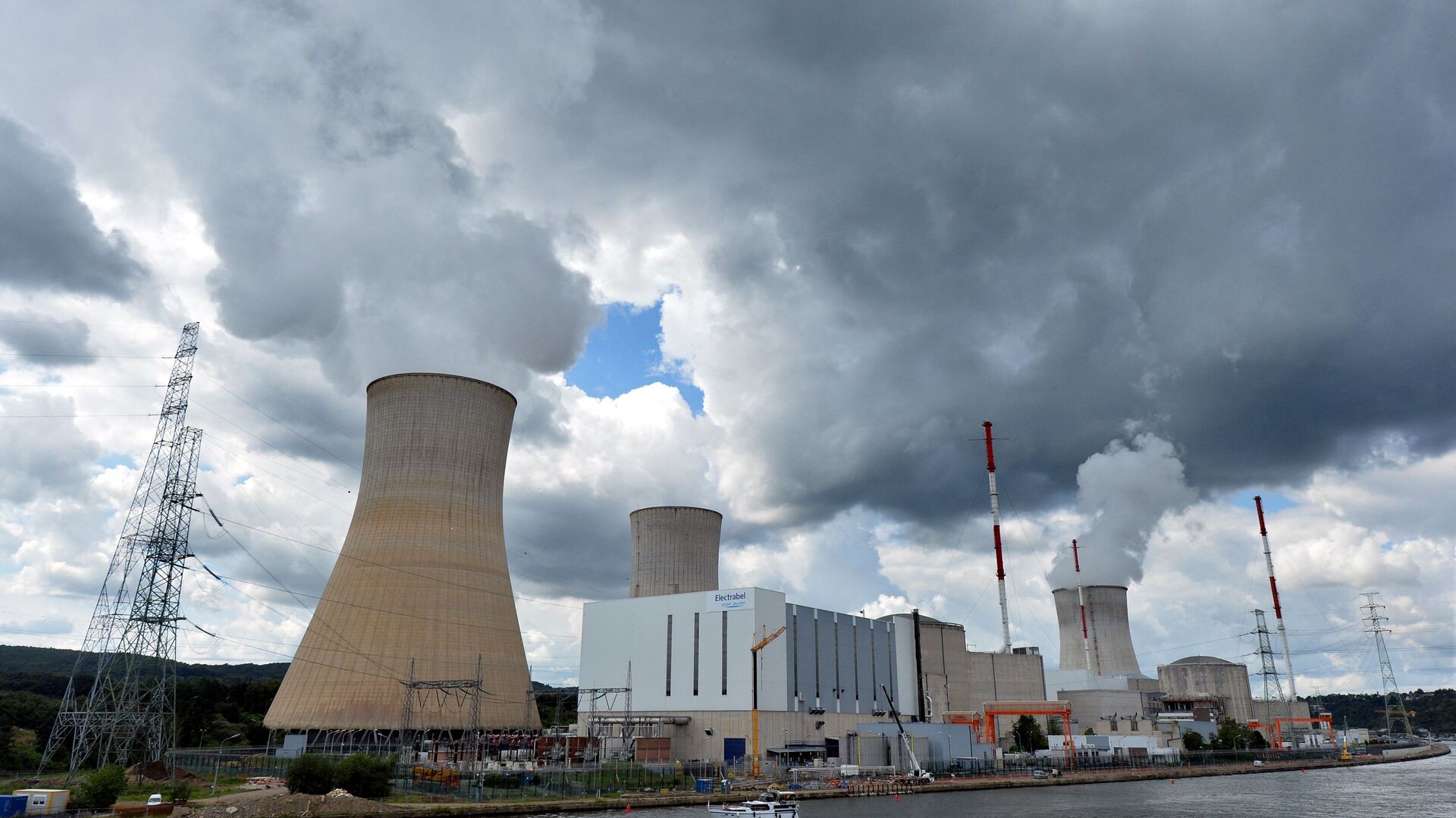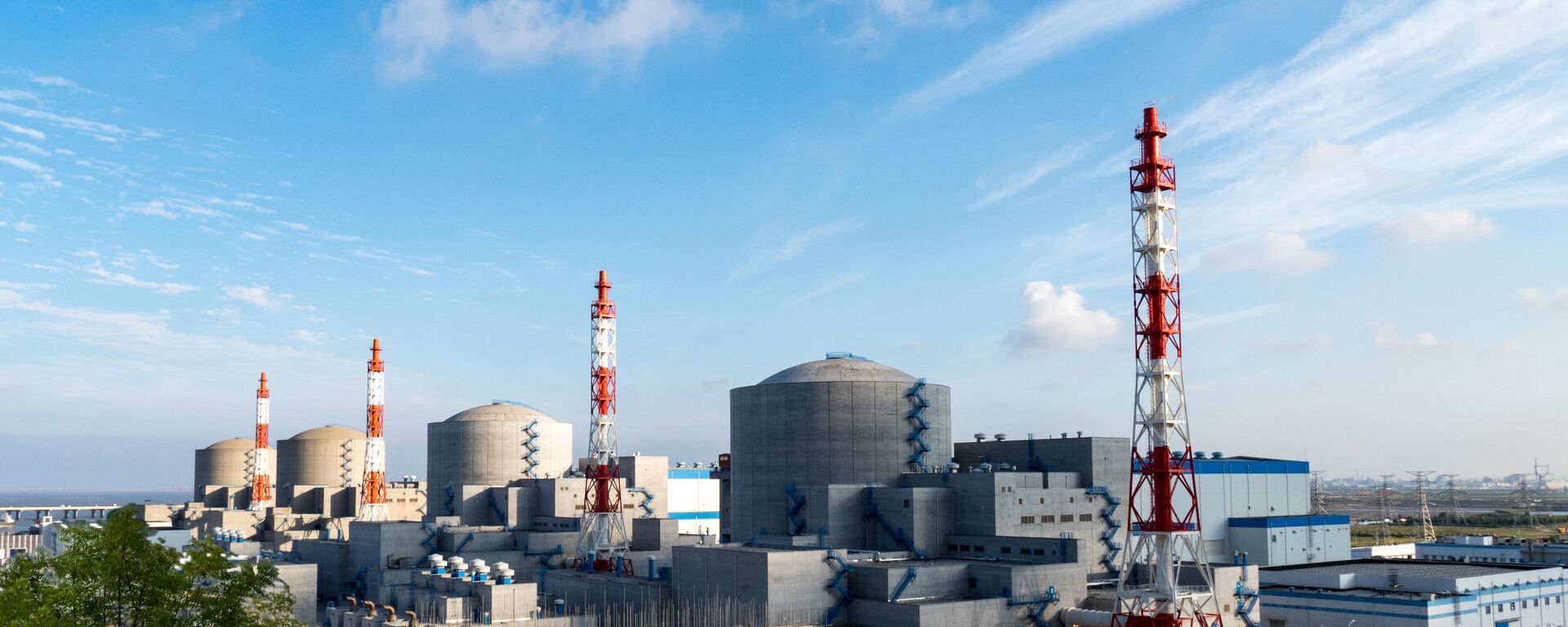https://sputnikglobe.com/20240721/south-koreas-reactor-venture-highlights-loss-of-nuclear-expertise-by-western-powers-1119452061.html
South Korea's Reactor Venture Highlights Loss of Nuclear Expertise by Western Powers
South Korea's Reactor Venture Highlights Loss of Nuclear Expertise by Western Powers
Sputnik International
South Korea’s plan to build two nuclear reactors in the Czech Republic, “effectively making a bridgehead for nuclear plant exports to Europe,” raises a number of interesting questions, says Dr. Chris Busby, a physical chemist and scientific secretary of the European Committee on Radiation Risk.
2024-07-21T20:30+0000
2024-07-21T20:30+0000
2024-07-21T20:30+0000
analysis
opinion
south korea
european union (eu)
nuclear reactor
https://cdn1.img.sputnikglobe.com/img/07e5/07/0f/1083392988_0:203:3077:1933_1920x0_80_0_0_2ed2f25b22cbba0e38cc748f603fc612.jpg
“Why can’t Europe build its own reactors? Why is South Korea suddenly involved?” he inquires, noting that South Korea apparently also plans to export more reactors to the UK, the Netherlands, Poland and “other countries.”The United Kingdom essentially “gave up on building their own” and while France did “jump in… the French EDF just can’t seem to complete one, and costs go up and up and up,” he notes. “As for the US reactors, they have all kinds of problems including cost problems. South Korea must have seen a gap in the market and dived in,” Busby adds. “The Czech government cannot deal with Russia because it is in the EU basket and mustn’t talk to the Russians. No doubt there was a good deal offered by South Korea, and the agreement was signed.” Russian political scientist and nuclear energy expert Alexey Anpilogov also suggests that South Korea’s foray into the nuclear reactor market is the result of the loss of expertise in nuclear power field not only in the United States but also in the EU and even in France who until recently “remained an island of stability of sorts for nuclear energy.” Meanwhile, French nuclear power plant projects, both in France and in Finland, took much longer to complete than originally intended and cost a lot more than originally planned, he adds. “In my opinion, it became apparent in the modern world that if you halt all production activity in some high-tech sphere even for 10-15 years, you end up losing key expertise because during that specialists [in that area] leave you so there is no more succession i.e. the passing of technology to new generations,” he explains. Thus, the problems that could have been easily solved by American and European engineers in the 1970s or 1980s pose a serious challenge for their successors today, which, in the nuclear power field, leads to safety issues and to a serious increase of time and money spent on nuclear projects, Anpilogov concludes.
https://sputnikglobe.com/20240710/peaceful-nuclear-power-where-is-russia-building-facilities-1119327664.html
south korea
Sputnik International
feedback@sputniknews.com
+74956456601
MIA „Rossiya Segodnya“
2024
News
en_EN
Sputnik International
feedback@sputniknews.com
+74956456601
MIA „Rossiya Segodnya“
Sputnik International
feedback@sputniknews.com
+74956456601
MIA „Rossiya Segodnya“
south korea nuclear reactors, south korea nuclear energy
south korea nuclear reactors, south korea nuclear energy
South Korea's Reactor Venture Highlights Loss of Nuclear Expertise by Western Powers
South Korea’s plan to build two nuclear reactors in the Czech Republic, “effectively making a bridgehead for nuclear plant exports to Europe,” raises a number of interesting questions, says Dr. Chris Busby, a physical chemist and scientific secretary of the European Committee on Radiation Risk.
“Why can’t Europe build its own reactors? Why is South Korea suddenly involved?” he inquires, noting that South Korea apparently also plans to export more reactors to the UK, the Netherlands, Poland and “other countries.”
“In Europe, if you (as a politician, as a State, as someone with no idea of the poisonous downstream effects) want to buy a nuclear power station, you have few choices. France, USA, Russia and South Korea. No one else is selling them, it seems,” Busby explains.
The United Kingdom essentially “gave up on building their own” and while France did “jump in… the French EDF just can’t seem to complete one, and costs go up and up and up,” he notes.
“As for the US reactors, they have all kinds of problems including cost problems. South Korea must have seen a gap in the market and dived in,” Busby adds. “The Czech government cannot deal with Russia because it is in the EU basket and mustn’t talk to the Russians. No doubt there was a good deal offered by South Korea, and the agreement was signed.”
Russian political scientist and nuclear energy expert Alexey Anpilogov also suggests that South Korea’s foray into the nuclear reactor market is the result of the loss of expertise in nuclear power field not only in the United States but also in the EU and even in France who until recently “remained an island of stability of sorts for nuclear energy.”
“Because a large number of countries, like Germany and Italy, has given up nuclear power. Spain has also adopted a program of shutting down nuclear plants,” Anpilogov says. “And some countries, like Britain, have lost the expertise needed for building nuclear reactors while formally retaining their nuclear energy capabilities.”
Meanwhile, French nuclear power plant projects, both in France and in Finland, took much longer to complete than originally intended and cost a lot more than originally planned, he adds.
“In my opinion, it became apparent in the modern world that if you halt all production activity in some high-tech sphere even for 10-15 years, you end up losing key expertise because during that specialists [in that area] leave you so there is no more succession i.e. the passing of technology to new generations,” he explains.
Thus, the problems that could have been easily solved by American and European engineers in the 1970s or 1980s pose a serious challenge for their successors today, which, in the nuclear power field, leads to safety issues and to a serious increase of time and money spent on nuclear projects, Anpilogov concludes.



